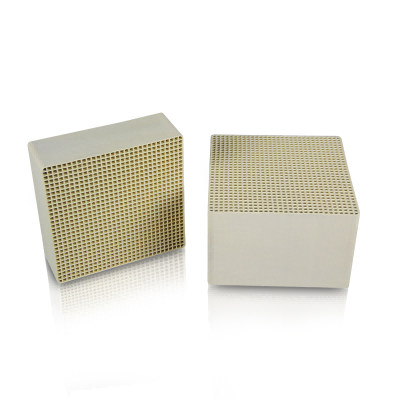Yuanchen Technology: Introduction to various carrier series SCR denitration catalysts (VI)
Oct 28, 2022Kangm et al [11] investigated the SCR activity of MnOx denitrification catalysts prepared with ammonium carbonate, potassium carbonate, sodium carbonate, ammonia, sodium hydroxide and potassium hydroxide as precipitating agents using Mn(NO3)2˙xH2O as the precursor of MnOx. The results showed that carbonate was superior to alkali, sodium salt was superior to potassium salt and ammonium salt as precipitating agents; MnOx denitrification catalysts prepared with sodium carbonate as precipitating agent The MnOx denitrification catalyst prepared with sodium carbonate as precipitant showed high catalytic denitrification activity (over 90% denitrification efficiency) at low temperatures (100-200°C) due to its high specific surface area and amorphous crystalline structure.

Although the one-component MnOx denitrification catalyst has the advantages of high catalytic efficiency and low reaction temperature, the one-component denitrification catalyst has certain sintering phenomenon in the preparation process, which affects the dispersion and specific surface area of the denitrification catalyst; in addition, the denitrification catalyst has poor N2 selectivity at low temperature, and the resistance to H2O and SO2 poisoning is not strong, and it is easy to be deactivated in the flue gas environment. In addition, the catalyst has poor N2 selectivity at low temperatures and is not very resistant to H2O and SO2 poisoning. Elemental doping is one of the effective ways to solve these problems. Elemental doping is the doping of other metallic elements into the single component MnOx denitrification catalyst to produce a composite Mn-based denitrification catalyst. On the one hand, this method can effectively reduce the sintering of the active metal during the preparation of denitration catalysts and improve the dispersion and specific surface area of the active metal in denitration catalysts; on the other hand, the added metal atoms can form solid solutions or new crystalline phases with the MnOx [12-13], resulting in a synergistic effect that is beneficial to improving the denitration catalyst activity. The representative elements used for the preparation of MnOx denitrification catalysts are Ce, Fe, Cu, Zr, W, etc. Yang et al [14] prepared an Fe-Mn composite denitrification catalyst by co-precipitation method with good low-temperature catalytic activity and N2 selectivity. Kang et al [16] prepared a non-loaded Cu-Mn composite denitrification catalyst with nearly 100% NO conversion at 50-200 °C. Long et al [17] prepared three oxide denitrification catalysts, Mn-Fe, Mn-Zr and Mn-Fe-Zr, which were evaluated at 100-180 °C. The low-temperature catalytic performance of the three denitrification catalysts was evaluated at 100-180 °C, and the NO removal rate could reach nearly 100% at 15000 h-1 air speed. In addition, Peng et al [18] prepared Mn-Ce-W denitrification catalysts by co-precipitation method and Miguel et al [19] prepared Mn1-xMxCr2O4 (M=Mg,Ca; x=0~0.1) spinel denitrification catalysts. These composite Mn-based denitrification catalysts all exhibited high catalytic activity and N2 selectivity for SCR reaction.